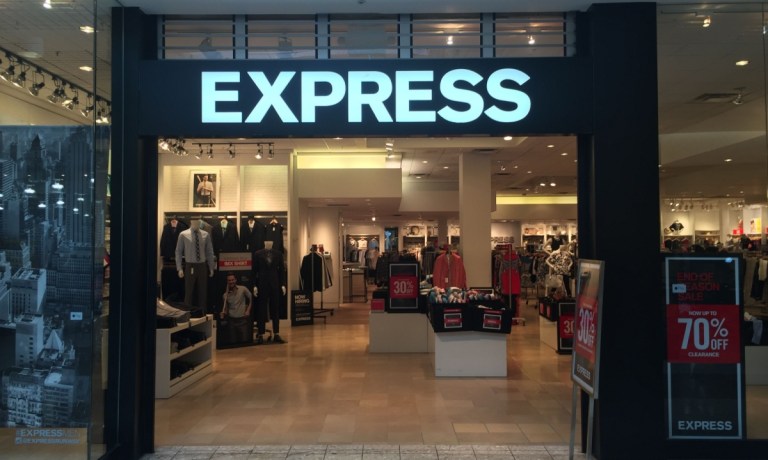
With young consumers’ fashion habits rapidly evolving alongside quickly changing social media trends, Express has not been able to keep up.
The fast-fashion company, which in addition to its self-titled retail chain also owns Bonobos and UpWest, announced Monday (April 22) that it has filed for Chapter 11 bankruptcy and that it plans to close more than 100 stores (95 Express locations and all UpWest locations).
The retailer stated that it received a letter from a group led by WHP Global, with Simon Property Group and Brookfield Properties also involved, to start the court-supervised process of formally selling the company.
“We continue to make meaningful progress refining our product assortments, driving demand, connecting with customers and strengthening our operations,” Express CEO Stewart Glendinning said in a statement. “We are taking an important step that will strengthen our financial position and enable Express to continue advancing our business initiatives.”
On his first (and last, so far) earnings call since being appointed in September, Glendinning attributed the retailer’s challenges to a failure to keep its finger on the pulse of its customers’ habits.
“We’d gotten a little bit away from where our consumer was buying, and we were serving out [a] set of products that were not aligned with the customer set,” he said, adding that shoppers have been wanting to dress more casually in the post-quarantine era.
These challenges come as consumers’ tastes and preferences are evolving more rapidly than in previous eras, especially the younger generations, who are most eager to buy new clothes.
PYMNTS Intelligence’s new study “New Reality Check: The Paycheck-to-Paycheck Report — Why 60 Percent of Gen Z’s Live Paycheck to Paycheck,” which draws from a survey of more than 3,400 U.S. consumers, reveals that Gen Z spends the greatest share of their personal income on clothing and accessories. Each successive generation allocates a smaller portion of their paycheck to these purchases.
These young shoppers’ tastes are highly informed by social media, where trends evolve rapidly, per supplemental research from “Tracking the Digital Payments Takeover: Monetizing Social Media,” a PYMNTS Intelligence and Amazon Web Services collaboration. The study’s survey of nearly 3,000 U.S. consumers, showed that 68% of Gen Z consumers searched for products on social media, and 22% ultimately completed a purchase, the highest shopping rate on social media across all generations.
Brands that cannot be nimble and agile, adjusting to rapidly changing trends, risk falling behind. Fast fashion overall continues to grow every year. Plus, consumers prioritize clothing shopping. PYMNTS Intelligence’s “New Reality Check: The Paycheck-to-Paycheck Report: The Nonessential Spending Deep Dive Edition,” created in collaboration with LendingClub, finds that, among 70% of retail shoppers who buy “nice-to-have” items at least sometimes, clothing is the most common splurge.
Yet not all retailers are benefiting from this growth. Brands such as Shein, that rapidly release new, trendy products to appeal to this highly connected demographic, are gaining share, and those that are not able to refresh their merchandise as quickly risk falling behind if they are not meeting some other core shopper need.